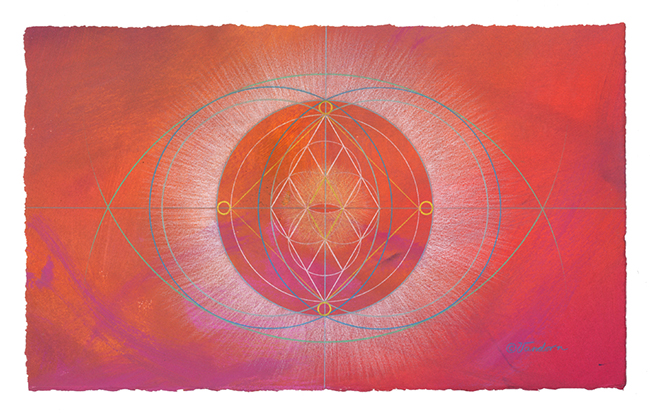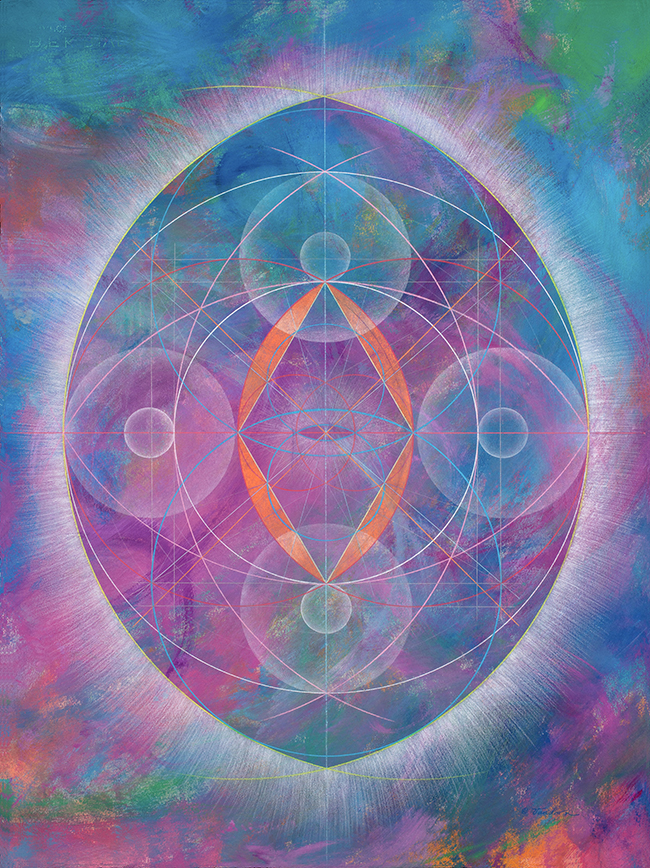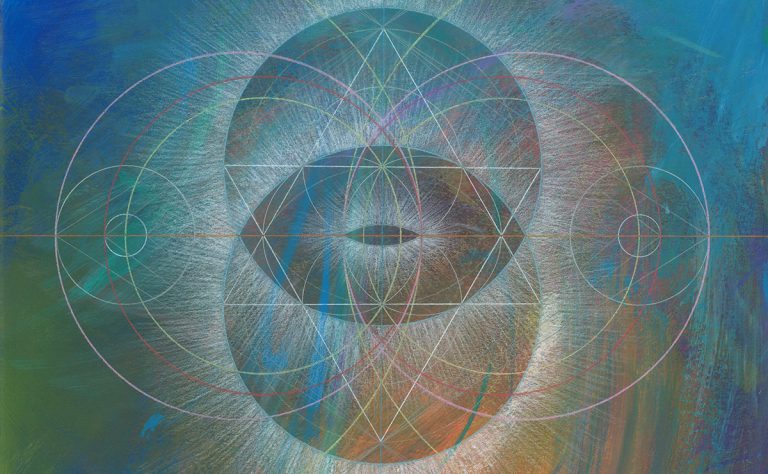Born in Greensboro, NC, in 1953, Vandorn Hinnant is a distinguished artist known for his profound exploration of form and geometry in art. With a Bachelor of Arts degree in Art Design from North Carolina A & T State University and further studies in sculpture at UNC-Greensboro, Hinnant’s career is marked by a deep engagement with both educational and artistic communities. He is a recipient of the 1993-1994 NC Arts Council Artist Fellowship Award and has participated in numerous artist residencies, including The Hambidge Center for the Arts and Sciences, Project Row Houses, and the Penland School of Crafts. Hinnant has also contributed as a guest curator, juror, and lecturer at various institutions. His work spans over four decades, with exhibitions ranging from the North Carolina Museum of Art to the New York Hall of Science.

Hinnant’s artistic journey is deeply intertwined with the spiritual and mathematical aspects of art, often delving into the ancient symbolic language of geometry, sometimes referred to as ‘The Geometry of Art and Life’ or ‘Sacred Geometry.’ This influence is evident in many of his works, such as “A Window to The Golden Temple” and “The Four Arcana of The Great Circle of Life.”
In 1994, artist John Thomas Biggers, upon seeing Hinnant’s work, remarked, “Man… you are dealing with pure spirit!” This encounter significantly impacted Hinnant, leading him to explore the vesica piscis in his art. This geometric shape, often symbolizing the ‘all-seeing eye of God,’ became a central theme in his work. Biggers requested a piece emphasizing the vesica piscis on a vertical axis, diverging from Hinnant’s usual horizontal orientation. This request marked the beginning of a new series for Hinnant, focusing on the vertical vesica.
One of the first pieces in this series was “The Four Arcana of The Great Circle of Life.” This work reflects Hinnant’s belief in the secrets of Nature and the importance of balance and equilibrium. The Great Circle of Life metaphorically represents Nature, emphasizing the need for a wholesome relationship with it. The composition aims to serve as a visual alchemical formula, designed to activate a memory of a sacred dimension of consciousness that is ever-present in Nature and must be preserved.
Hinnant’s work often carries coded messages meant to reach into the subconscious mind, evoking ‘aha moments’ in viewers. These moments are a testament to his ability to connect deeply with those who experience his art, encouraging a heightened awareness and appreciation of the sacred geometry that underpins his creations.

Throughout his career, Hinnant has consistently participated in and supported charitable art exhibitions. His extensive exhibition history includes notable displays such as the North Carolina Museum of Art’s 1980 group exhibition, “Afro-American Artists – NC USA,” and Atlanta’s Hammonds House Galleries’ 1993 solo exhibition, “Expanded Visions.” In 1999, his work was featured in Houston’s Project Row Houses’ installation/residency, “Pattern: Reflection of Universal Order.”
In 2009, Hinnant was part of the “Rhythm of Structure Math/Art” collaborative exhibition, which began at The Bowery Poetry Club in New York City and traveled to Antioch College in Ohio and The Ringling School of Art & Science in Florida. More recently, his exhibition, “Vandorn Hinnant: Lover of Form and The Beauty of Number,” has been showcased at three HBCUs in the South. In 2018, his six-month-long solo exhibition, “HIDDEN MATHEMATICS: Images by Vandorn Hinnant – A Surprising Connection Between Math and Art,” was featured at the New York Hall of Science.
Hinnant’s dedication to teaching and sharing his knowledge is evident in his role as an instructor. From 2007 through 2010, he taught a unique mandala print-making class at Duke University through the Osher Lifelong Learning Institute (OLLI) of the Department of Continuing Education. This “no tech” class provided students with an opportunity to explore the artistic and meditative aspects of mandala creation.
Throughout his career, Hinnant has remained committed to his artistic vision, using his work to bridge the gap between art and spirituality. His pieces often serve as meditative tools, inviting viewers to engage with the deeper, often hidden, dimensions of reality. Hinnant’s art is not just a visual experience but an invitation to explore the interconnectedness of all things through the lens of sacred geometry.
In summary, Vandorn Hinnant’s unique blend of mathematical precision and spiritual depth offers viewers a chance to see beyond the surface and into the very fabric of existence.

